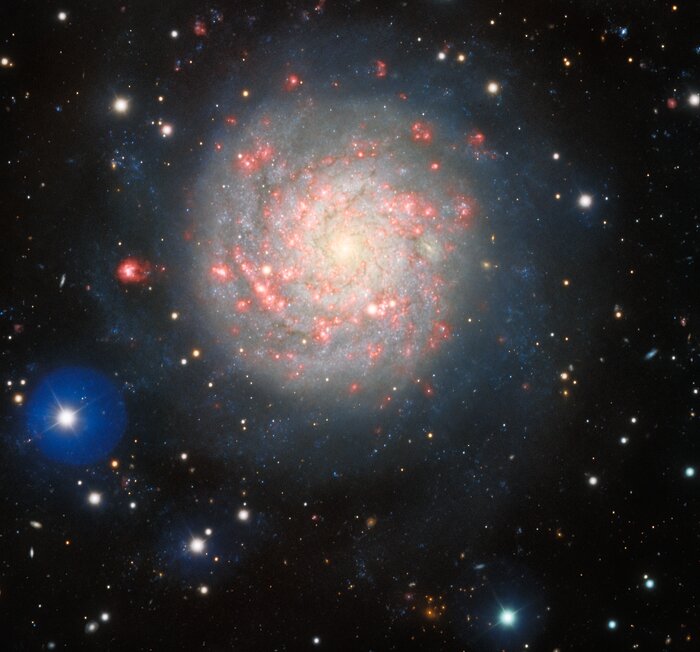Hidden Among Supernovae
Approximately as bright in the night sky as Proxima Centauri, this quiescent spiral galaxy known as NGC 1058 betrays its unassuming appearance with a record of supernovae and starburst activity. Captured by the Gemini Multi-Object Spectrograph (GMOS) at Gemini North, operated by NSF’s NOIRLab, the galaxy lies about 30 million light-years away in the constellation of Perseus as part of the NGC 1023 Group. A Seyfert Type 2 galaxy, NGC 1058 hosts a luminous center with a mix of blues and pinks along its arms that indicate active regions of star formation. Three supernovae have been observed in the galaxy: SN 1961V, SN 1969L, and SN 2007gr. SN 1961V has been enveloped in mystery as its explosion is yet to be understood. Although a faint shell of expanding gas can just be resolved by astronomers, some are skeptical because there is a remaining bright star near the position of its wake. As the ‘supernova’ gradually fades into the night, the incriminating star continues to shine with an unusually long decay time.
You can see another view of NGC 1058 from Kitt Peak National Observatory (KPNO), a Program of NSF’s NOIRLab, here.
Credit:International Gemini Observatory/NOIRLab/NSF/AURA
Image processing: T.A. Rector (University of Alaska Anchorage/NSF NOIRLab), J. Miller (Gemini Observatory/NSF NOIRLab), M. Rodriguez (Gemini Observatory/NSF NOIRLab) & M. Zamani (NSF NOIRLab)
About the Image
| Id: | iotw2403a |
| Type: | Observation |
| Release date: | Jan. 17, 2024, noon |
| Size: | 2032 x 1894 px |
About the Object
Wallpapers
Coordinates
| Position (RA): | 2 43 27.28 |
| Position (Dec): | 37° 20' 30.72" |
| Field of view: | 4.93 x 4.60 arcminutes |
| Orientation: | North is 270.1° left of vertical |
Colors & filters
| Band | Wave-length | Tele-scope |
|---|---|---|
| Optical g | 475 nm | Gemini North GMOS-N |
| Optical r | 630 nm | Gemini North GMOS-N |
| Optical Z | 876 nm | Gemini North GMOS-N |
| Optical H-alpha | 656 nm | Gemini North GMOS-N |
| Optical i | 780 nm | Gemini North GMOS-N |

